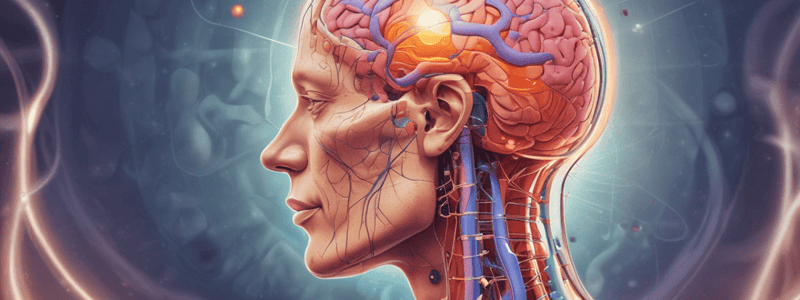Podcast
Questions and Answers
What is a characteristic of visceral pain?
What is a characteristic of visceral pain?
- Distinct localization
- Strong emotional and autonomic reactions, but only in response to tissue damage
- Diffuse, poorly localized pain (correct)
- Afferents terminal only in lam I
Which type of pain is typically associated with tissue damage?
Which type of pain is typically associated with tissue damage?
- Somatic pain (correct)
- Visceral pain
- Autonomic pain
- Emotional pain
Which type of pain is often referred to somatic sites, such as muscle and skin?
Which type of pain is often referred to somatic sites, such as muscle and skin?
- Autonomic pain
- Emotional pain
- Somatic pain
- Visceral pain (correct)
What is a key difference in the way afferents travel for visceral and somatic pain?
What is a key difference in the way afferents travel for visceral and somatic pain?
Flashcards are hidden until you start studying
Study Notes
Visceral Pain
- Diffuse, poorly localized pain that is often referred to somatic sites, such as muscles and skin
- Characterized by strong emotional and autonomic reactions
- Can be activated without tissue damage
- Afferent terminals are located in laminae I, II, V, and X
- Afferents disperse over several segments and travel with sympathetic afferents via hypogastric, lumbar, and splanchnic nerves, as well as spinal afferents
- Easily sensitized, making it prone to hypersensitivity
Somatic Pain
- Characterized by distinct localization, allowing for precise identification of the pain source
- Pain is not referred to other areas of the body
- Emotional responses are less intense compared to visceral pain
- Typically associated with acute tissue damage or injury
- Afferent terminals are located in laminae I and II
- Afferents travel with somatic/peripheral nerves, resulting in less dispersal between segments
- Less easily sensitized, making it less prone to hypersensitivity
Studying That Suits You
Use AI to generate personalized quizzes and flashcards to suit your learning preferences.



